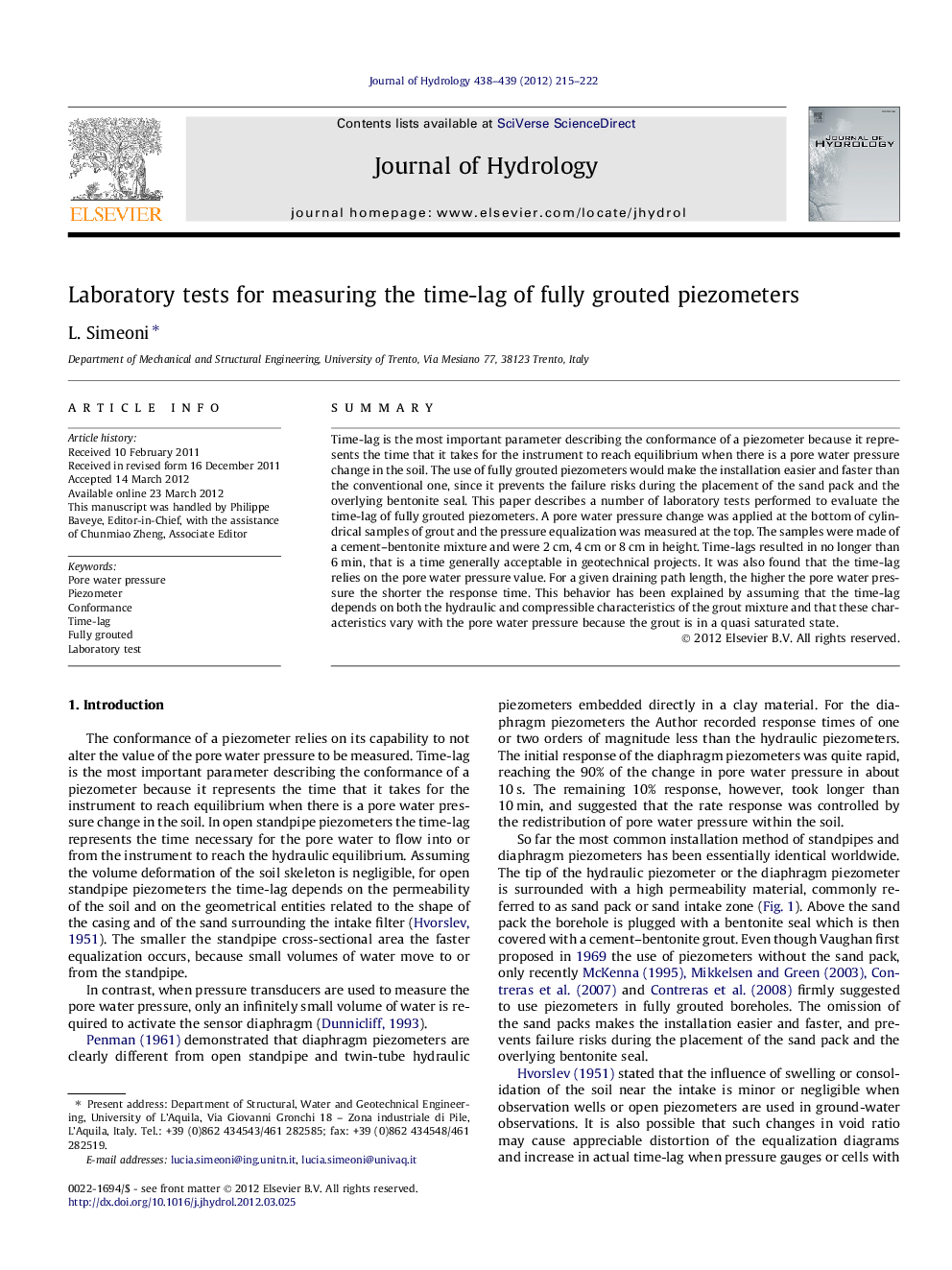| Article ID | Journal | Published Year | Pages | File Type |
|---|---|---|---|---|
| 6414034 | Journal of Hydrology | 2012 | 8 Pages |
SummaryTime-lag is the most important parameter describing the conformance of a piezometer because it represents the time that it takes for the instrument to reach equilibrium when there is a pore water pressure change in the soil. The use of fully grouted piezometers would make the installation easier and faster than the conventional one, since it prevents the failure risks during the placement of the sand pack and the overlying bentonite seal. This paper describes a number of laboratory tests performed to evaluate the time-lag of fully grouted piezometers. A pore water pressure change was applied at the bottom of cylindrical samples of grout and the pressure equalization was measured at the top. The samples were made of a cement-bentonite mixture and were 2Â cm, 4Â cm or 8Â cm in height. Time-lags resulted in no longer than 6Â min, that is a time generally acceptable in geotechnical projects. It was also found that the time-lag relies on the pore water pressure value. For a given draining path length, the higher the pore water pressure the shorter the response time. This behavior has been explained by assuming that the time-lag depends on both the hydraulic and compressible characteristics of the grout mixture and that these characteristics vary with the pore water pressure because the grout is in a quasi saturated state.
⺠Time-lag is the most important parameter describing the conformance of a piezometer. ⺠Fully grouted piezometer installation would be easier and faster. ⺠Time-lags no longer than 6 min were recorded with laboratory test. ⺠Time-lag relies on the pore water pressure value. ⺠The grout mixture is in a quasi-saturated state.
